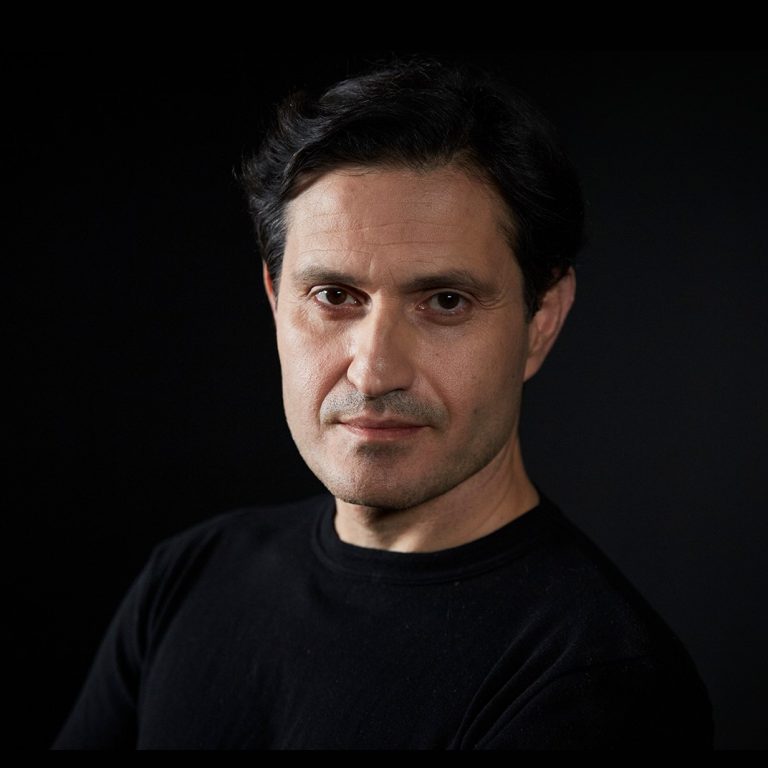Director and stage and film actor, ethnic Crimean Tatar (Qt — qırımtatarlar) Akhtem Seitablaiev was born in Yangiyul town near Tashkent in Uzbekistan; the place where his parents, like other Crimean Tatars, were deported to from their native Crimea in May 1944. His family returned home only in the early 90’s, and later Akhtem was forced to leave his homeland again due to the occupation. Today he is one of the most successful Ukrainian actors and directors, and heads ‘Crimean House’.
During February and March 2014, Russia occupied the Crimean peninsula as a result of Russian armed aggression against Ukraine, which continues to this day. The illegal and temporary rejection of part of Ukraine and the unilateral decision of accession of Crimea to the Russian Federation are not recognized by Ukraine or most countries of the world and international organizations such as the UN General Assembly, the PACE, and the OSCE.
Since the beginning of Russian occupation of Crimea, about 45,000 Crimean people, including many Crimean Tatars, have left for mainland Ukraine. The Russian occupation authorities are actively persecuting Crimean Tatars on ethnic grounds. Over the years of occupation, many cases of kidnapping, missing people, house searches, arrests, and torture of members of the Crimean Tatar community have been recorded. Crimean Tatars have been unable to return safely to their homeland for 7 years.
In the series created jointly with the Ukrainian Institute, the heroes in VR glasses look at sights in Crimea that are important for them, share their memories and memorable stories about their native peninsula.
Akhtem
Akhtem Seitablaiev (Qt — Ahtem Şevket oğlu Seit-Abla) says that most Crimean Tatars do not have any gentle feelings either for the Soviet Union or for that time.
— 50% of our people perished during the deportation, mainly children, the elderly, and women. According to the same Soviet statistics, 90% of Crimean Tatar men over 16 were on the front line serving as Red army soldiers at the time. While the men were away from home, the Soviet authorities were destroying their families.
Akhtem moved from Uzbekistan to Crimea after graduating from high school at the age of 16, and entered the Acting Department of the Crimean Cultural Enlightenment School. It was a special Crimean Tatar course, initiated for the revival of Crimean Tatar Theatre, after which Akhtem Seitablaiev performed in plays in Simferopol and staged some of the plays as a director. While living in Crimea, he started making films.
— It was thanks to the cinema that I got to know Crimea when I was looking for locations for my films.
Akhtem has been living in Kyiv for about 15 years now. Before the Russian occupation of Crimea, he used to travel to the peninsula almost every month. But for approximately seven years he has been unable to get there.
— I have parents, two of my children, my whole family there. That’s where my Crimea is.

Photo by Oleh Pereverzev.
Since 2017, Akhtem Seitablaiev has been heading ‘Crimean House’. It is a cultural platform that deals with the discourse of Crimea in the Ukrainian information space, and also helps the people displaced from Crimea remember their language, culture, and traditional crafts.
— I often meet with students and I have such an experiment: I invite young people to tell their first emotion when they hear the word ‘saray’ (a shed — tr.). Usually, nine out of ten say, “some obscure building in a yard, where some tools are kept”. And then I say that from my mom’s language it is translated as ‘a palace’. And what if I say the word ‘khokhol’? Most students would say, “That’s what moskals (Russians, ethnic slur — tr.) call us in order to humiliate us”. But later they get really surprised when I say that from my mother’s language, ‘khokhol’ translates as ‘son of the sky’. Who needed to change the meanings of these words? The answer is so obvious, it just speaks for itself.
The last time Akhtem visited Crimea was in February 2014. He saw the occupation of the peninsula with his own eyes.
— I clearly remember the feeling of helplessness, fear for my family, and anger of not understanding what could be done and how, but being confident that something had to be done.
It was not the first time in a while when the Crimean Tatars were deprived of the opportunity to live peacefully on their own land. But they already have the experience of returning home and believe that this is just a matter of time and effort.
— During the Soviet Union, my parents had no doubt that we would return to Crimea. As an adult, I asked them where that belief came from. At the time, there were no visible signs that the USSR would collapse and we would be able to return. They replied that they had nothing but faith and the effort they made (they were active participants in the Crimean Tatars’ movement to return). But not believing in it was a sign that you were not alive. Time has shown that the same thing is going to happen this time.

Chufut Kale scenery. Photo provided by Akhtem Seitablaiev.
Bahchesaray: Khan’s Palace and Chufut Kale
Aktem recalls that when he first came to Crimea as a 16-year-old, he felt… disappointed. All his life he heard about the beautiful peninsula with the sea, mountains, and palm trees in the stories of his family. But when he found himself at Simferopol airport, he didn’t see anything of those. In a few days, his cousin took Akhtem to Bahchesaray (Qt — Bağçasaray) to show him the house his father was going to buy for the family. It was right here that the young man managed to see the Crimea his parents told him about for the first time.

— My cousin and I were on the way to Bahchesaray. It was July and the weather was really hot. I opened the window in the Zhyguli (‘Lada’, a Soviet car, still produced in Russia — tr.) we were driving. At the entrance to Bahchesaray the landscape began to change — I saw mountains and felt the smell of lavender. At the time, there was a lot of lavender planted around Bahchesaray. Since then, the smell of lavender has been the first feeling of returning to the homeland.
The Khan’s Palace (Qt — Hansaray) in Bahchesaray is the only building of the Crimean Tatar palace architecture left in the world; in the 16th-18th centuries it served as the ancestral residence of the Crimean Khanate (Qt — Qırım Hanlığı) governors — the Giray Dynasty (Qt — Geraylar). It was a centre of the political, spiritual, and cultural life of Crimean Tatars.
— I’ve been there so many times: bringing my friends there, filming some episodes of my movies inside the palace, and filming myself too. We staged my play ‘The Fountain of Bahchesaray’ right there, inside the palace. So many fond memories are associated with it.
Back in 2013, Khan’s Palace was included in the tentative list of UNESCO World Heritage Sites. Ukraine was already preparing documents for this architectural monument to reach the main list, but the occupation of Crimea prevented this. At the end of 2017, the occupation authorities of the peninsula began a major ‘restoration’ of the Khan’s Palace.
— The occupation administration claims that it is done to preserve the palace. As far as I know from my sources and from those who once worked in the palace and have expertise in this field, this is actually the destruction of the Khan’s Palace because ancient beams and tiling are replaced with modern materials.
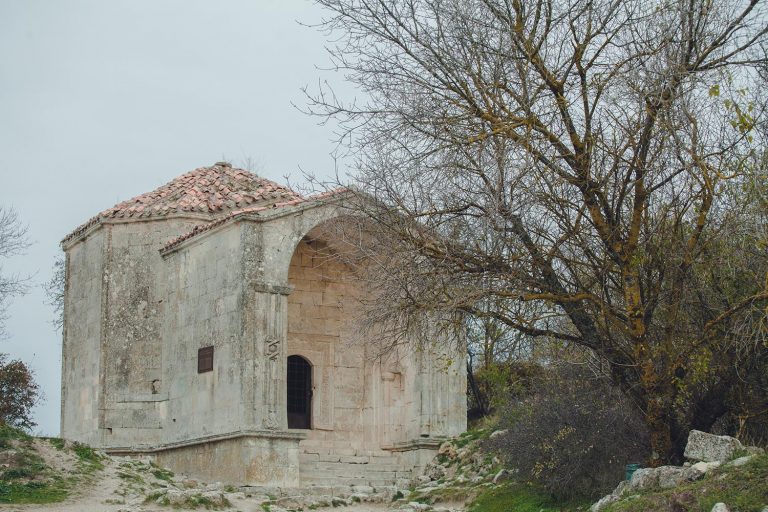
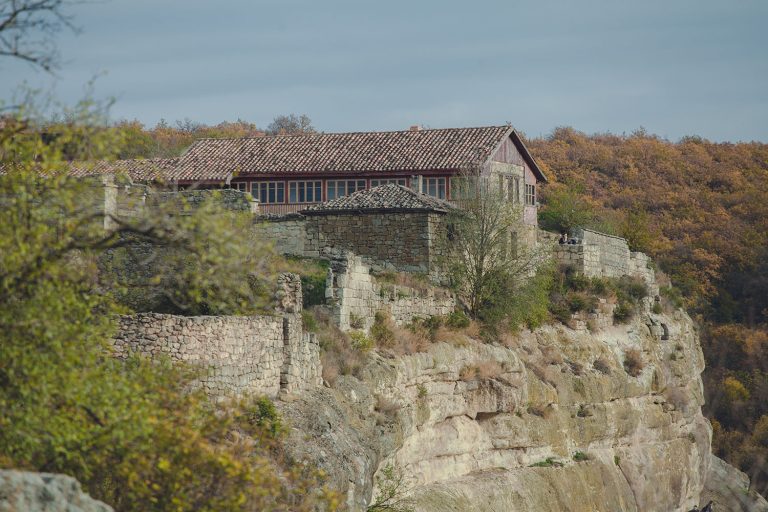
slideshow
Chufut Kale (Qt — Çufut Qale, ‘Jewish Fortress’) is a medieval fortress town, one of the most famous and largest Crimean ‘cave towns’, located three kilometres east of Bahchesaray.
— Chufut Kale is the second place I got to when I came to Crimea. An amazing case has happened to me here. We hiked up the slope, passed the Dormition Cathedral, which at the time was simply abandoned. Next was the Karaite Kenassa, and the next door was another house, where the legendary translator and cultural figure Ahatanhel Krymsky used to live. As we were walking I told my brother:
— There will be a well around the corner there.
— But you haven’t been here. Have you seen it somewhere in the picture?
— No.
So we moved on, and there was the well there, just like the one that appeared in my imagination. It was a so-called deja vu. And it was as if I was really connected to this land.
In 2012, some episodes of the film ‘Khaytarma’ (Qt — Qaytarma, ‘The Return’), in which Akhtem Seitablaiev was the director and lead actor, were also shot in Chufut Kale. The plot of the historical drama tells about the deportation of Crimean Tatars and is based on real events. The main character of the film is the national hero of the Crimean Tatar people, Soviet Union pilot Amet-Khan Sultan.
Native villages of Akhtem’s parents
In the village of Khapsikhor (Qt — Qapsihor; Morske since 1949) on the Black Sea coast, 20 kilometres west of Sudak (Qt — Sudaq), Akhtem’s mother was born.
— I have probably the warmest feelings connected with Khapsikhor, because this is my mother’s homeland. My friends live there and I loved to come there. Sometimes I could come with my family for three days at the beginning of May and in October when it was warm and there were not many people there. And there was everything that grew in the vegetable garden, so it was such an epicurean holiday of all Crimean delicacies. And my friend would meet me and always showed me the new places he was opening. We were going up in his car to incredible places, looking at the sea and walking deep into mountain gorges.
Akhtem recalls: when he entered the Acting Department in 1989, his group was taken to pick apples, grapes, and pears in Sudak. After the cotton harvesting in Tashkent, it seemed like a very easy job, so by lunchtime, students would gather the norm (the set amount of produce that had to be harvested in a certain period of time — tr.) or even double, so that they could go swimming in the sea or visit a familiar Crimean Tatar family.
— If anyone of our group heard that some Crimean Tatar family has moved to Crimea and lives two or three kilometres of mountain trails away, we went to visit those families. In general, it was very easy for Crimean Tatars to distinguish each other. For example, you could look at the car plate and understand that a person was from Central Asia. At the time, there was a 99 % probability that it was a Crimean Tatar who came to Crimea. They would definitely stop and greet each other, even if they did not know each other or had no joint relatives (and Crimean Tatars have relatives almost everywhere). And they would help each other if they needed to find a house for sale or to spend the night and on various other issues.
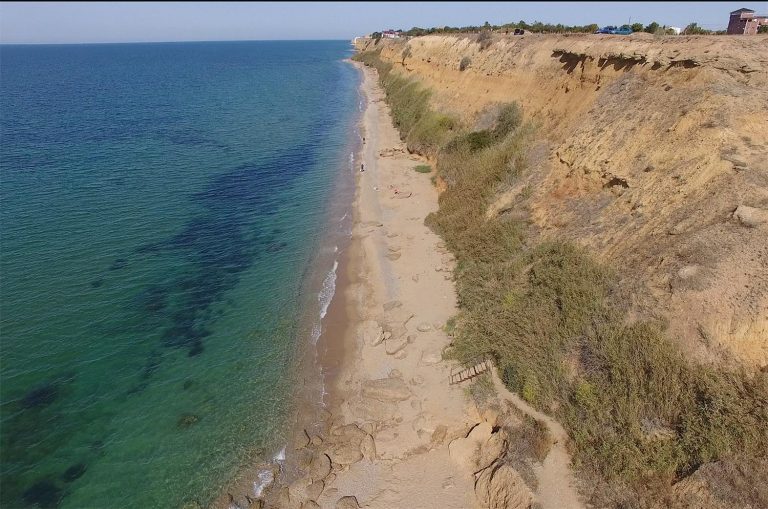
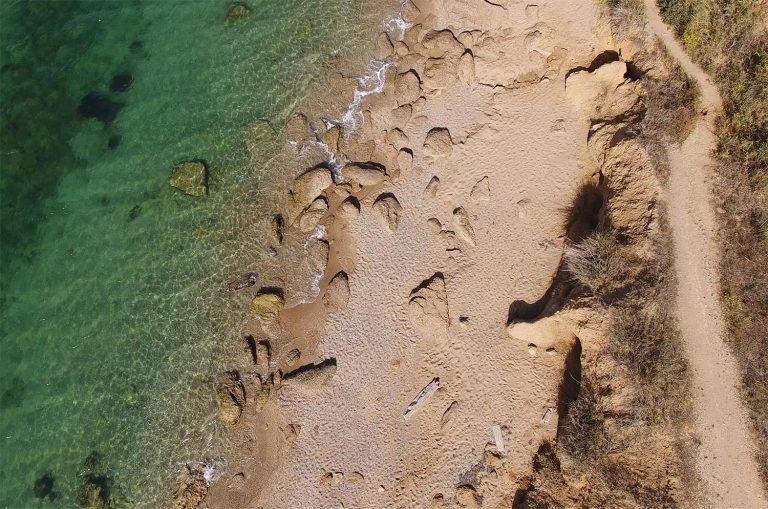
slideshow
Mamashay (Qt — Mamaşay; Orlivka since 1945) in the South-West Crimea near Sevastopol (old Qt — Aqyar) is Aktem’s father’s native village. It is located two kilometres from the Black Sea coast, on the right bank of the Kacha river (Qt — Qaçı).
— When I was not even a year old I got sick. My parents were told that in order to cure my bilateral pneumonia they had to take me to Crimea. At that time, Crimean Tatars were allowed to come, let’s say, for a holiday in Crimea, but not to live. I was brought to a village that is now called Orlivka, and, in fact, it is Mamashay village. I have the feeling that I remember this shore: running along it and constantly asking people, who rest there, for the food. My mother recently confirmed [this memory]. She said, “That day we realised that you were getting better”.
supported by
This publication was produced jointly by Ukraïner and the Ukrainian Institute.

